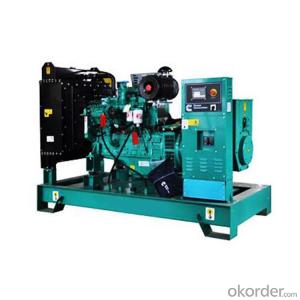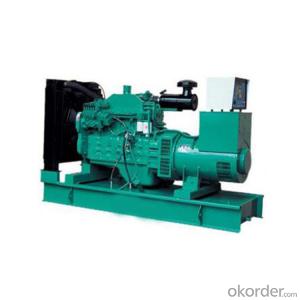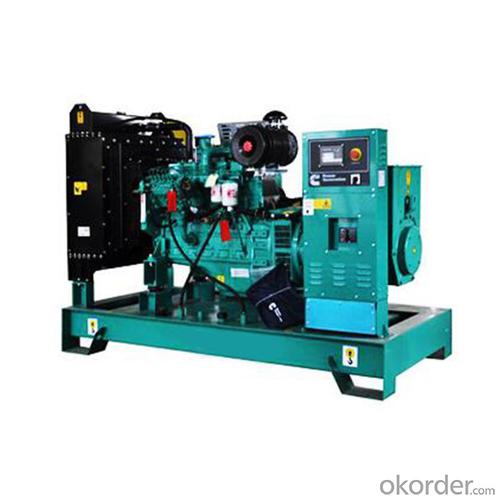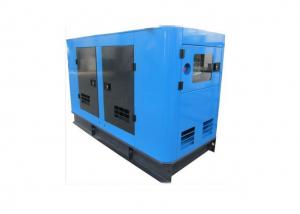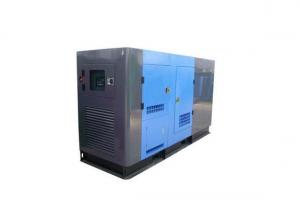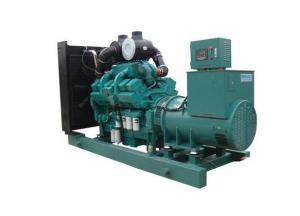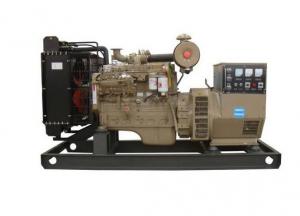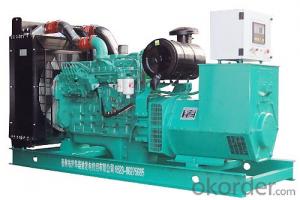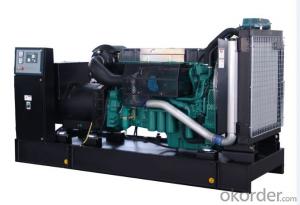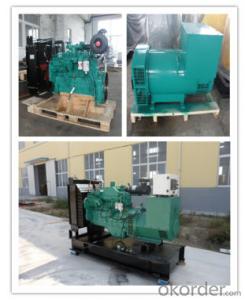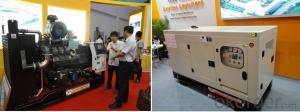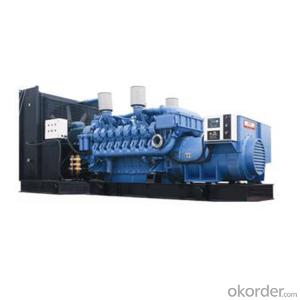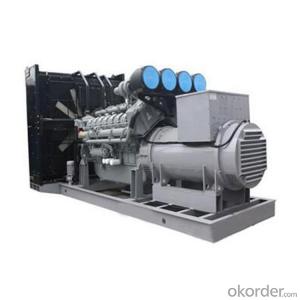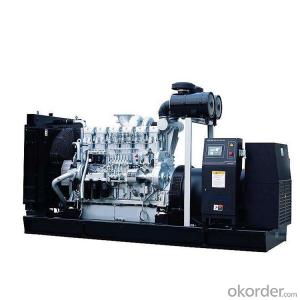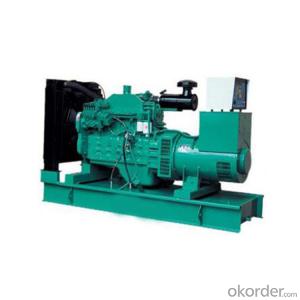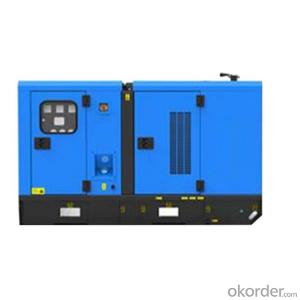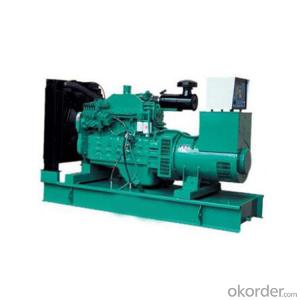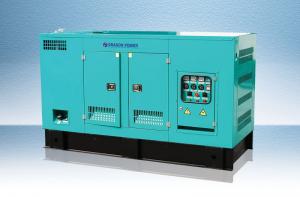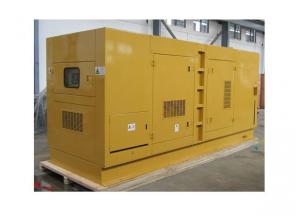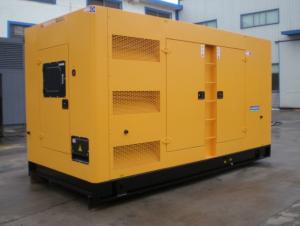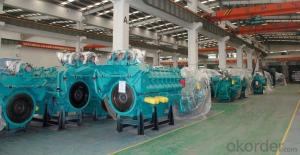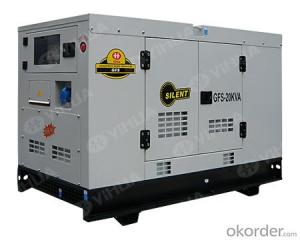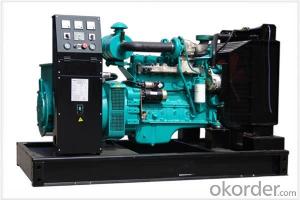Open Type Diesel Generating Set for Power Supply
- Loading Port:
- Shanghai
- Payment Terms:
- TT OR LC
- Min Order Qty:
- 1 set
- Supply Capability:
- 500 set/month
OKorder Service Pledge
OKorder Financial Service
You Might Also Like
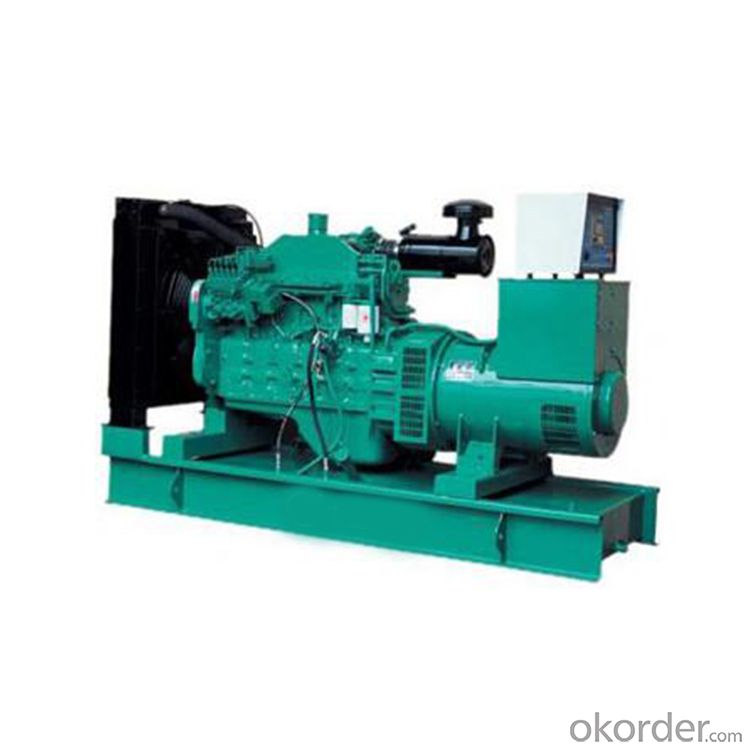
Its products meet the vehicle Ⅳ, countries Ⅲ emission regulations and the vehicle in the first stage, the second phase of the European and American Tier3 / StagelllA emission regulations, are widely used in light, medium, heavy truck, senior intercity passenger cars, large and medium-sized bus, engineering machinery, marine engines, generator sets, etc.
OPEN TYPE DONGFENG CUMMINS DIESEL GENERATING SET DATA SHEET | ||||||||||||
Genset Model | Standby Power | Prime Power | Fuel Consumption | Overall Size | Weight | Fuel Tank Capacity | Engine Description | Alternator Model | ||||
KVA | KW | KVA | KW | 100% L/H | L x W x H (mm) | KG | L | Model | Oil Capacity(L) | Coolant Capacity(L) | Stamford | |
ZOP27DK | 27 | 22 | 25 | 20 | 6.3 | 1580x650x1146 | 777 | 267 | 4B3.9-G2 | 11 | 20 | PI144E |
ZOP30DK | 30 | 24 | 27.5 | 22 | 6.5 | 1580x650x1146 | 777 | 267 | 4B3.9-G2 | 11 | 20 | PI144F |
ZOP33DK | 33 | 26.4 | 30 | 24 | 6.7 | 1800x730x1290 | 830 | 267 | 4BT3.9-G2 | 11 | 20 | PI144G |
ZOP39DK | 39 | 31 | 35 | 28 | 8.3 | 1800x730x1290 | 830 | 267 | 4BT3.9-G2 | 11 | 20 | PI144H |
ZOP44DK | 44 | 35 | 40 | 32 | 9.4 | 1800x730x1290 | 830 | 267 | 4BT3.9-G2 | 11 | 20 | PI144J |
ZOP55DK | 55 | 44 | 50 | 40 | 11.7 | 1900x738x1257 | 926 | 267 | 4BTA3.9-G2 | 11 | 23 | UCI224D |
ZOP63DK | 63 | 50 | 56 | 45 | 13.8 | 1900x738x1257 | 975 | 267 | 4BTA3.9-G2 | 11 | 23 | UCI224E |
ZOP70DK | 70 | 56 | 65 | 52 | 13.8 | 1900x738x1257 | 975 | 267 | 4BTA3.9-G2 | 11 | 23 | UCI224F |
ZOP80DK | 80 | 64 | 72 | 58 | 16.2 | 1900x738x1257 | 975 | 267 | 4BTA3.9-G11 | 11 | 23 | UCI224F |
ZOP93DK | 93 | 74 | 85 | 68 | 19.5 | 2200x830x1278 | 1249 | 374 | 6BT5.9-G2 | 16 | 24 | UCI224G |
ZOP110DK | 110 | 88 | 100 | 80 | 22.9 | 2200x830x1278 | 1272 | 374 | 6BT5.9-G2 | 16 | 24 | UCI274C |
ZOP115DK | 115 | 92 | 105 | 84 | 23.6 | 2200x830x1278 | 1297 | 374 | 6BT5.9-G2 | 16 | 24 | UCI274D |
ZOP125DK | 125 | 100 | 115 | 92 | 25.5 | 2200x830x1325 | 1297 | 374 | 6BTA5.9-G2 | 16 | 27 | UCI274D |
ZOP145DK | 145 | 116 | 135 | 108 | 29.5 | 2360x830x1334 | 1381 | 374 | 6BTAA5.9-G2 | 16 | 27 | UCI274E |
ZOP170DK | 170 | 136 | 155 | 124 | 34.8 | 2360x830x1334 | 1420 | 374 | 6BTAA5.9-G12 | 16 | 27 | UCI274F |
ZOP175DK | 175 | 140 | 160 | 128 | 35.7 | 2360x847x1366 | 1782 | 573 | 6CTA8.3-G2 | 24 | 32 | UCI274F |
ZOP200DK | 200 | 160 | 182 | 145 | 41.2 | 2360x847x1366 | 1832 | 573 | 6CTA8.3-G2 | 24 | 32 | UCI274G |
ZOP220DK | 220 | 176 | 200 | 160 | 43.3 | 2400x980x1460 | 1850 | 573 | 6CTAA8.3-G2 | 24 | 34 | UCI274H |
ZOP250DK | 250 | 200 | 225 | 180 | 47.8 | 2540x1018x1527 | 1960 | 573 | 6LTAA8.9-G2 | 24 | 35 | UCDI274J |
ZOP265DK | 265 | 212 | 250 | 200 | 53 | 2540x1018x1527 | 1985 | 573 | 6LTAA8.9-G2 | 24 | 35 | UCDI274K |
ZOP275DK | 275 | 220 | 250 | 200 | 54 | 2540x1018x1527 | 2204 | 573 | 6LTAA8.9-G3 | 28 | 35 | UCDI274K |
ZOP300DK | 300 | 240 | 275 | 220 | 58 | / | / | / | 6LTAA9.5-G3 | / | / | HCI444D |
ZOP350DK | 350 | 280 | 318 | 255 | 70 | / | / | / | 6LTAA9.5-G1 | / | / | HCI444ES |
ZOP330DK | 330 | 264 | / | / | 69 | 2940x1000x1555 | 3165 | 883 | QSM11-G2 | - | 36.7 | HCI444D |
ZOP400DK | 400 | 320 | 360 | 288 | 82.1 | 3100x1360x2100 | 3460 | 1594 | QSZ13-G6 | - | 75.3 | HCI444FS |
ZOP425DK | 425 | 340 | 388 | 310 | 73.5 | 3250x1360x2100 | 3600 | 1594 | 6ZTAA13-G3 | 45 | 55 | HCI444F |
ZOP450DK | 450 | 360 | 400 | 320 | 89.7 | 3200x1360x2100 | 3600 | 1594 | QSZ13-G7 | - | 75.3 | HCI444F |
ZOP475DK | 475 | 380 | 438 | 350 | 87 | 3250x1360x2100 | 3700 | 1594 | 6ZTAA13-G2 | 45 | 55 | HCI544C |
ZOP475DK | 475 | 380 | 438 | 350 | 89.5 | 3250x1360x2100 | 3700 | 1594 | 6ZTAA13-G4 | 45 | 55 | HCI544C |
ZOP468DK | 468 | 375 | 438 | 350 | 88.8 | 3250x1360x2100 | 3700 | 1594 | QSZ13-G2 | 45 | 57 | HCI544C |
ZOP500DK | 500 | 400 | 450 | 360 | 93.7 | 3250x1360x2100 | 3700 | 1594 | QSZ13-G5 | - | 75.3 | HCI544C |
ZOP500DK | 500 | 400 | 475 | 380 | 96.5 | 3250x1360x2100 | 3750 | 1594 | QSZ13-G3 | 45 | 57 | HCI544C |
ZOP88DK | 88 | 70 | 80 | 64 | / | / | / | / | QSB3.9-G3 | / | / | UCI224G |
ZOP138DK | 138 | 110 | 125 | 100 | / | / | / | / | QSB5.9-G3 | / | / | UCI274E |
ZOP198DK | 198 | 158 | 180 | 144 | / | / | / | / | QSB6.7-G4 | / | / | UCI274G |
ZOP275DK | 275 | 220 | 250 | 200 | / | / | / | / | QSB8.9-G4 | / | / | UCDI274K |
- Q: has ne one ever thought abt or seen a stand alone affordable power generation unit cheaper than normal power supply on running costs(even if higher one time costs) .I am in india.but ne info is welcome.My idea is abt an INDIVIDUAL HOUSE OWNER NEEDS
- well, okorder
- Q: I am looking to save money on the electric/gas bill this winter and am considering a diesel generator to supply domestic power at 240 volts.Is this practical?
- nope
- Q: ie a ships diesel generator.
- I'm assuming by trip you mean shut down/off Plenty of reasons: 1) overheat, most common cause, could be lost water pump or water supply or cooling lines plugged 2) electrical, although diesel does not use sparkplugs there are electrical components. There are glow plugs that get the whole process started when cold, there is a starter motor that gets it all going and there is some method to keep the fuel warm enough to flow correctly 3) Starve for fuel, either fuel ran out, to low temp so its sludge 4) Loss of oil pressure that is used for lubrication 5) Ouput limits, there will be an overcurrent/overvoltage system regulating the output of he generator and if it gets really out of wack then it will kill the whole thing to prevent damage to everything That's all I can think of right now
- Q: I'd like to hear some propaganda used to make a religious arguement and what makes it misleading.For example: The story about NASA discovering a missing day, and a Christian advisor explains to NASA that the bible claims God stopped the sun for 1 day.Turns out it never happened. NASA never discovered a lost day, Harold Hill (the Christian advisor) DID advise for NASAon what diesel generators to buy. This entire NASA story is based on Hill's comments in a book he wrote, and it turns out the we found a missing day legend existed years before NASA even existed.Another one: C14 can't date past 50k years (to imply that its not possible to date anything older than 50k years). Truebut argon dating can! Funny how that got left out.One for the Christian crowd: Only the bible claims Jesus existed.Nope, he's mentioned in the Gnostic Gospels, and a few historians of the day mentioned This guy named Jesus gathering a following in Isreal.Any others?
- Here's okorder
- Q: i recently bought a reflux still it requires a 120 volt water pump to run it so my problem is i have the pump i just cant figure out how to get power i cannot use a gas or diesel generator cause it is to loud moon shining is illegal so the generator will get me caught i need a way to power the 120 volt water pump quietly and i don't got a lot of money in my budget so i need a way to power it for under a hundred dollars
- CANNOT DO IT WITH $100.
- Q: Hi, I'm fifteen and going to Tanzania in February on a Mission trip. I don't know what to wear, because I don't wanna wear Nike Shorts and offend people. I'm on a mission trip so I definitley wanna be representing Christ. I also need a pack list so I wont be forgetting anything. Also, what do I take money-wise? Cash, debit nfused. First time over seas. HELP! God Bless! Merry Christmas!:) -Emma
- Hello okorder
- Q: I am looking into using solar energy and generators for commercial use. Using the solar energy during the day is a piece of cake obviously. But I would need a backup generator for night-time use. If I were to get a commercial grade backup generator, could I essentially recharge it during the day while it is not in use? Any other suggestions that this route are welcome. Maybe even a backup storage (battery) for the the excess solar energy. Something to store the unused energy?
- if you are using a classical gas or diesel powered generator there would be no need for recharging obviously if you are using a bank of batteries and a inverter to convert the DC voltage to AC, then you would need to size your solar power system large enough to both run your home and charge up the batteries so enough power would be stored for night time use and seasonal adjustments.
- Q: How would i get people to fund a bomb shelter. Of course i will guarantee them a spot for them and there closest 4 family members. I want to stock it and build. I also want to have at least enough food to live for 6 months for at least 25 people. I will also want a ton of water (not literately a ton). Also some sort of water purification system, ventilation, and a diesel generator.I only want to shovel out about 5 thousand of my own cash.Tell me about how many people i need, how to get them. Maybe some places to get supplies.Thank you (:
- Wow. Um, hang on. This is gonna take a while to write out. Okay. First, you need to have it all planned out before you can get people on board. Have a blueprint of the bomb shelter and explain how it will work. You should hire an architect or engineer for the floor plans. If it's 25 people then you could have 5 rooms with two bunk beds and a single in each. For air ventilation you could have heavy duty industrial air filters. For food, I would suggest those emergency buckets that have 200 meals in them (they sell them at Costco). You should also have a little farm and fish tank in there do constantly have food replensished. When you have it all planned out then you could put an ad in the paper, Craigslist, or just spread the word. Make sure you write up a contract. I can't believe I answered this.
- Q: hi i am looking for a generator to provide roughly 25kv for home use. roughly the need is4-5 1.5 ton ac3 fridge3 lcd 32-60 inch6 fansa15-20 lights2-3 computer/laptopmultimedia system2 water pumpssome additional usual house requirementswhat option do have on the basis of following:initial costdiesel / petrol / natural gassizenoise leveloperating costoverall efficiencyi personally like HONDA, but they have only 6.5kv available in pertol/gasi want to avoid diesel due to cost and bad fumesin petrol i can make it convertable to gas as wellbut people guide me that if i go in 25kv than the option is only for diesel.pls guide me.imran.
- One other consideration for your generator is the natural gas has less power in the range of 25% If you need 7.5 KW and it is natural gas then the generator needs to be a 10KW unit. Diesel is quite reliable but storage of fuel is a concern, for petrol also. I suggest you contact a local electrical contractor who specializes in home generator installations. 25 KW is about the smallest for your needs. 40 is probably a better choice. All in all they are not cheap.
- Q: How much is the waste of the power that may be lost in the combination of two engine and where I can find the diagram that shows the relation between rpm and HP in the combined two diesel engine.this two engine combined with a clutch that synchronize two engine for two input in gears and single output.
- It's best to connect them at the crank so that they can be timed to fire in a manner that your getting the most amount of power you can. This has been done in applications as small as a .12cc engine all the way up to huge engines that power large ships. The most common place I used to see it is with gas engines for tractor pull. The engines do sync up and will run together when you pair them up thru a clutch
Send your message to us
Open Type Diesel Generating Set for Power Supply
- Loading Port:
- Shanghai
- Payment Terms:
- TT OR LC
- Min Order Qty:
- 1 set
- Supply Capability:
- 500 set/month
OKorder Service Pledge
OKorder Financial Service
Similar products
Hot products
Hot Searches
